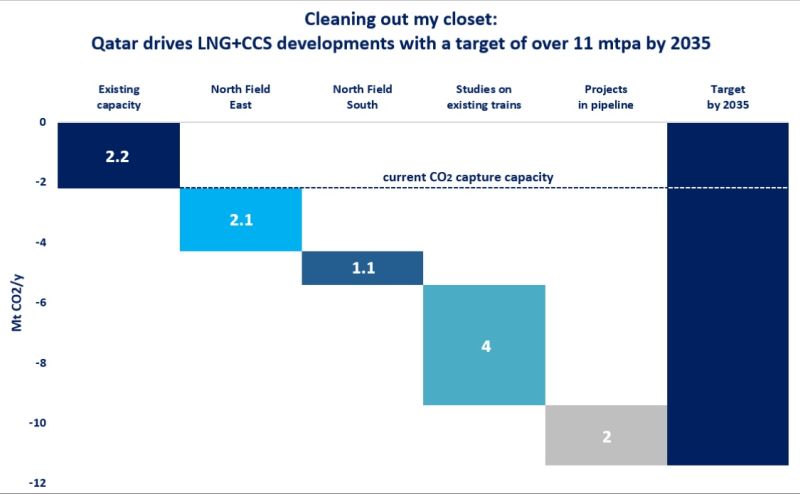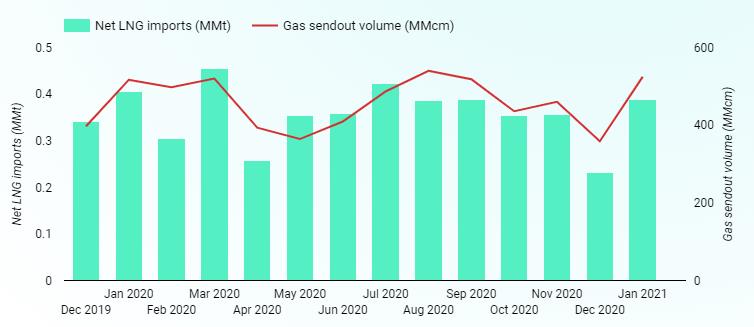

Qatar’s mega LNG expansion will solidify Qatar’s position as a top supplier of LNG with lower emissions intensity as the country is implementing the world’s largest LNG+CCS project.
Qatar is betting big with its expansion of 65 mtpa (or 88 bcm/y) of LNG liquefaction capacity by 2030 and the addition of over 120 LNG carriers to its top-notch fleet.
This strong growth is accompanied by ambitious targets of reducing the carbon intensity of LNG facilities by 35% by 2035, and by 25% the carbon intensity of the upstream segment.
A key component of this strategy is the scale-up of CCS capabilities. Qatar’s current CCS capacity stands at just over 2 mtpa and the country already captured and sequestered 5 mt of carbon emissions since 2019.
All the LNG expansion phases have a CCS component and QatarEnergy targets a CCS capacity of 7-9 mtpa by 2030, further expanding to 11 mtpa by 2035 -making it the world’s largest LNG+CCS system by far.
Together with the ambition to use more solar power, Qatar’s CCS strategy will solidify the country’s position as a top supplier of LNG with lower emissions intensity.
This will be key in terms of LNG marketing strategy in the 2030s as emission regulations become tighter in Europe and northeast Asia, and a two-tier market for low-emissions LNG emerges.
Source: Greg Molnar













